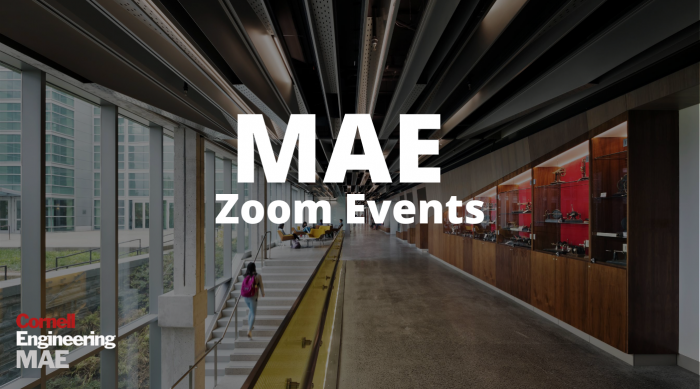
Sibley School Seminar Series: Youngsoo Choi - Where are we with data-driven surrogate modeling for various physical simulations?
Location
The Cornell Sibley School Seminar Series will be held virtually for the Spring of 2021.
Description
Where are we with data-driven surrogate modeling for various physical simulations?
Youngsoo Choi
Research Scientist, Lawrence Livermore National Labs
Abstract
A surrogate model is built to accelerate computationally expensive physical simulations, which is useful in multi-query problems, such as inverse problem, uncertainty quantification, design optimization, and optimal control. In this talk, two types of data-driven surrogate modeling techniques will be discussed, i.e., the black-box approach that incorporates only data and the physics-informed approach that incorporates the physics information as well as data within the surrogate models. The advantages and disadvantages of each method will be discussed. Furthermore, several recent developments of data-driven physics-informed surrogate modeling techniques at LLNL will be introduced in the context of various physical simulations. For example, the reduced order model overcomes the difficulty of shock propagation phenomenon, achieving a speedup of O(2~10) with a relative error less than 1% for relatively small Lagrangian hydrodynamics problems. The space–time reduced order model accelerates large-scale Neutron transport simulations by a factor of 7,000 with a relative error less than 1%. The nonlinear manifold reduced order model shows perfect marriage between machine learning and physics-informed surrogate modeling and also solves the challenge imposed by the advection-dominated physical simulations.
Bio
Youngsoo is a computational scientist in CASC under Computing directorate. His research focus lies on developing efficient reduced order models for various physical simulations to be used in multi-query problems, such as inverse problems, design optimization, and uncertainty quantification. He is currently leading data-driven surrogate model development team for various physical simulations. He has earned his undergraduate degree for Civil and Environmental Engineering from Cornell University and his PhD degree for Computational and Mathematical Engineering from Stanford University. He was a postdoc in Sandia National Laboratory and Stanford University prior to joining LLNL in 2017.
Open to the Engineering Community


